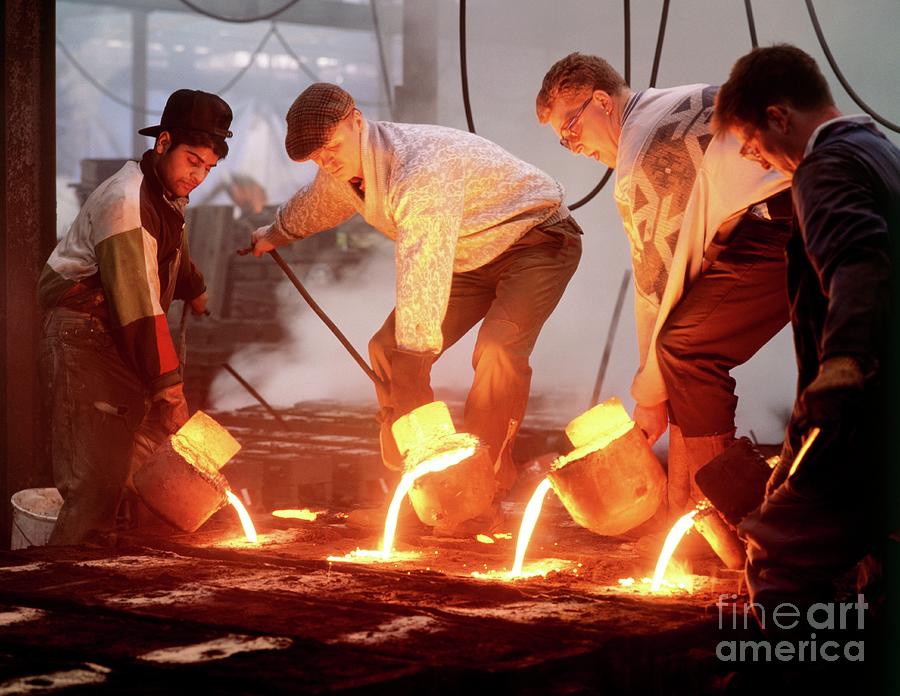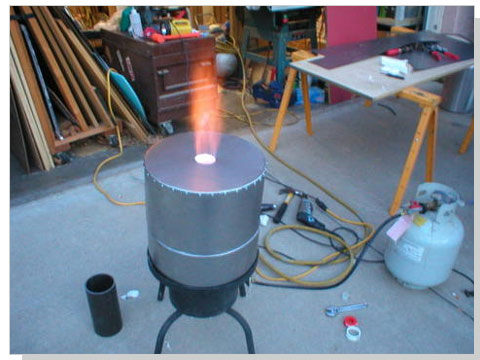Discover the Ingenious Methods Utilized in a Metal Foundry for Superior Casting Results
In today's competitive production landscape, metal foundries are significantly taking on innovative strategies to improve casting results - Metal Foundry. Advanced computer simulations permit precise modeling of liquified metal habits, while 3D printing enables rapid production of complex molds. In addition, environmentally friendly products and automation simplify operations. These developments assure significant improvements in effectiveness and top quality control. Nevertheless, the effect of these innovations on sustainability and manufacturing techniques remains to be completely explored
Advanced Computer Simulations in Metal Casting
Advanced computer system simulations have transformed the metal casting process by improving precision and performance. These sophisticated tools allow engineers to create online designs of cast components, enabling them to evaluate and anticipate the habits of liquified metal during the spreading stage. By mimicing numerous parameters such as temperature level, flow rate, and cooling rates, makers can identify potential defects prior to physical production starts.
This aggressive technique reduces waste and decreases costly mistakes, eventually bring about enhanced product top quality. In addition, simulations help with the optimization of mold and mildew layouts, making sure that they meet the specific requirements of each task. The assimilation of computational liquid dynamics (CFD) and limited aspect analysis (FEA) further adds to the accuracy of these simulations, offering understandings that were formerly unattainable. Therefore, advanced computer system simulations have ended up being an important element of modern metal foundries, considerably progressing the market's capacities.
3D Printing for Molds and Patterns
3D printing has actually emerged as a groundbreaking technique for producing molds and patterns in the metal foundry sector. This modern technology allows the fast manufacturing of complicated geometries that conventional manufacturing methods battle to accomplish. By utilizing additive manufacturing, foundries can produce detailed designs with minimized lead times and material waste. The ability to produce mold and mildews on demand enables better adaptability in design versions, assisting in faster prototyping and modifications.
3D printing can use a selection of products, including plastics and steels, tailored to particular casting demands. This versatility enhances the accuracy of mold and mildews, causing superior casting outcomes with improved surface area coatings. Furthermore, the decrease in the number of components needed streamlines setting up processes, even more maximizing production efficiency. As foundries remain to embrace 3D printing, they are positioned to redefine market criteria, leading the means for advancement and boosted productivity in metal spreading procedures.
Eco-Friendly Products and Processes
As the metal foundry sector deals with enhancing stress to minimize its ecological footprint, the fostering of green materials and processes has actually ended up being crucial. Shops are currently exploring lasting alternatives to traditional products, such as making use of recycled steels and bio-based binders. These products not only decrease waste however also reduced energy usage throughout manufacturing.
In addition, innovations in sand casting methods have resulted in making use of synthetic sands that are much less damaging to the environment. Foundries are additionally implementing innovative processes like molten metal treatment that reduces discharges and boosts the top quality of cast items.
Water-based finishes have changed hazardous solvents, promoting a much safer job atmosphere. By integrating these environment-friendly methods, metal foundries can significantly reduce their eco-friendly impact while keeping top notch spreading results. This shift not only profits the environment however also lines up with the expanding customer need for sustainable production services
Automation and Robotics in Foundry Procedures
While the metal foundry market welcomes advancement, the integration of automation and robotics is changing operations considerably. Automated systems enhance processes such as click reference mold and mildew production, metal pouring, and casting completing, considerably improving effectiveness. Robotics facilitate the handling of hefty materials, reducing the threat of workplace injuries and ensuring safer settings.

Further, using check this automated directed vehicles (AGVs) enhances product transportation within centers, making sure timely shipment of parts to ideal workstations. By applying these innovations, foundries can adjust to varying demands with greater dexterity, ultimately resulting in improved profitability and competition in the market. As automation and robotics remain to develop, they hold the potential to redefine standard foundry methods and drive further innovations in casting techniques.
Real-Time Tracking and Quality Assurance Techniques
The improvements in automation and robotics have paved the way for extra sophisticated approaches to top quality assurance in metal foundries. Real-time surveillance systems utilize sophisticated sensing units and data analytics to track essential parameters throughout the casting procedure. These systems continuously evaluate variables such as material, pressure, and temperature level make-up, making it possible for instant discovery of discrepancies from developed requirements.
Quality control methods now integrate artificial intelligence formulas that examine historical data to forecast possible defects prior to they occur. This positive strategy decreases waste and enhances total manufacturing effectiveness. Additionally, incorporated responses loops permit rapid modifications, ensuring that each spreading fulfills stringent top quality requirements.
The implementation of electronic twins-- digital reproductions of physical assets-- has likewise transformed quality control, permitting engineers to mimic and optimize processes in real-time. Together, these innovative methods considerably boost the integrity and high quality of castings, establishing brand-new industry standards in metal foundry procedures.
Often Asked Questions
What Kinds of Metals Are Commonly Cast in Factories?
Generally cast metals in foundries include light weight aluminum, bronze, iron, and brass. Each metal displays distinct buildings, making them ideal for different applications, such as auto parts, equipment, and artistic sculptures, enhancing their adaptability in manufacturing.

The length of time Does the Casting Process Typically Take?
The Homepage casting procedure generally takes numerous hours to days, depending on aspects such as the complexity of the mold and mildew, kind of metal used, and air conditioning needs. Each phase influences the total duration substantially.
What Safety and security Procedures Remain In Area for Foundry Employees?

Exactly how Are Defects in Castings Identified and Addressed?
Flaws in spreadings are identified via visual assessments and non-destructive testing methods. As soon as spotted, foundry workers resolve them by improving procedures, readjusting product compositions, and applying rehabilitative procedures to ensure quality and conformity with standards.
What Is the Expense Range for Metal Casting Providers?
The cost range for metal spreading services usually ranges $1 to $10 per extra pound, relying on elements such as material type, intricacy of the design, and production volume, impacting total rates significantly.
In today's competitive production landscape, metal foundries are progressively taking on cutting-edge strategies to improve casting results. As the metal foundry industry deals with raising stress to lower its ecological footprint, the adoption of eco-friendly products and processes has ended up being vital. Factories are now checking out lasting choices to conventional products, such as making use of recycled metals and bio-based binders. By incorporating these environment-friendly practices, metal foundries can markedly lower their ecological impact while maintaining premium casting outcomes. The advancements in automation and robotics have paved the means for more advanced techniques to top quality guarantee in metal foundries.